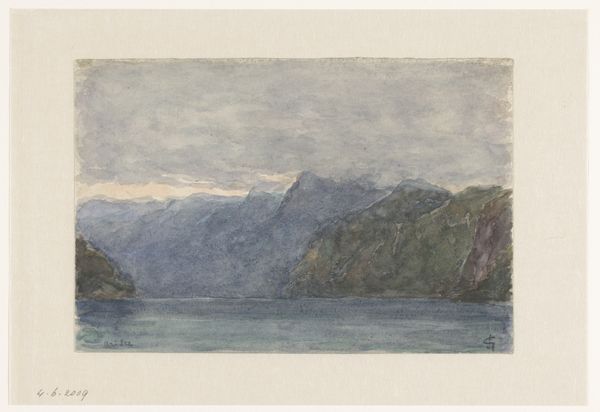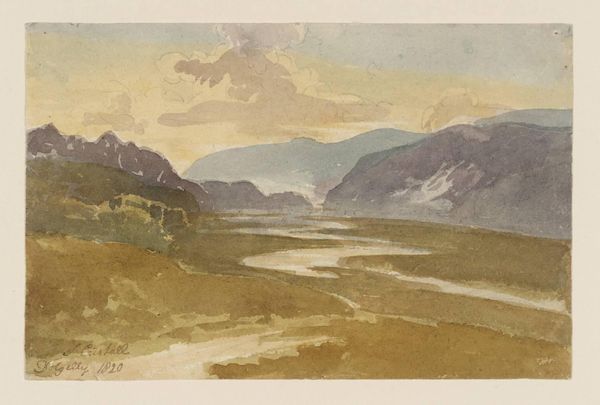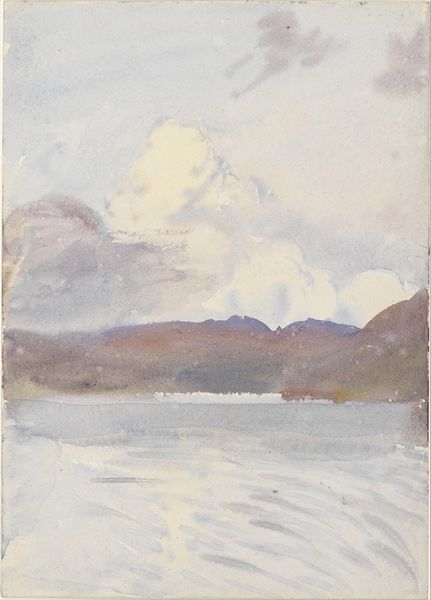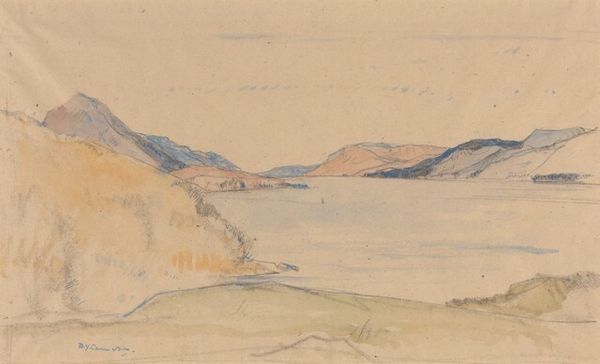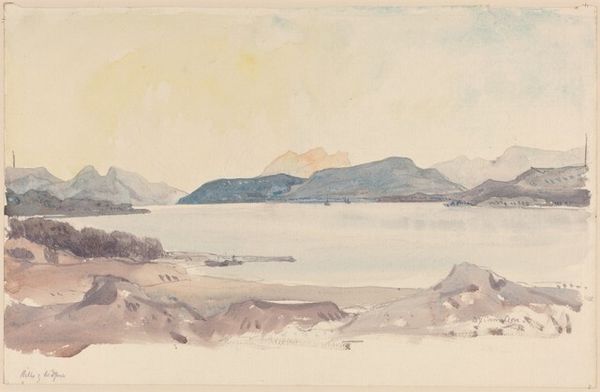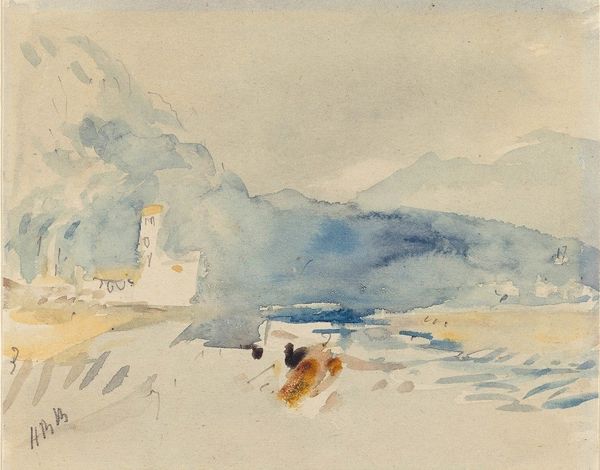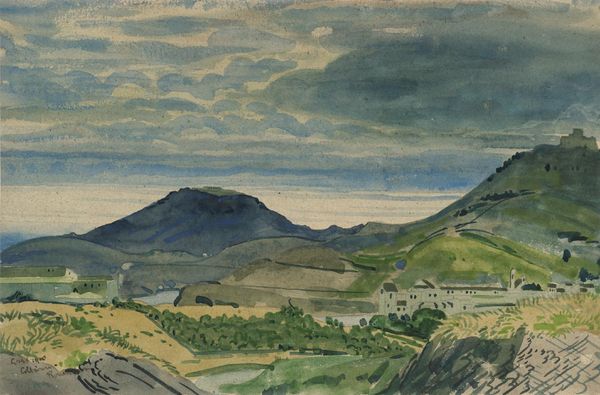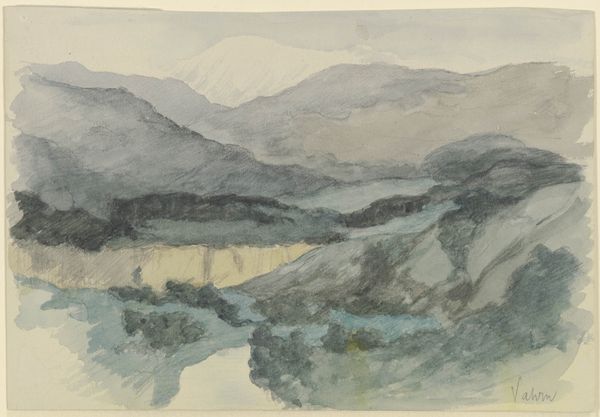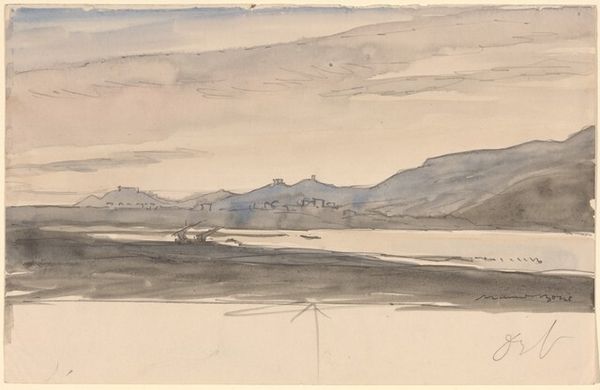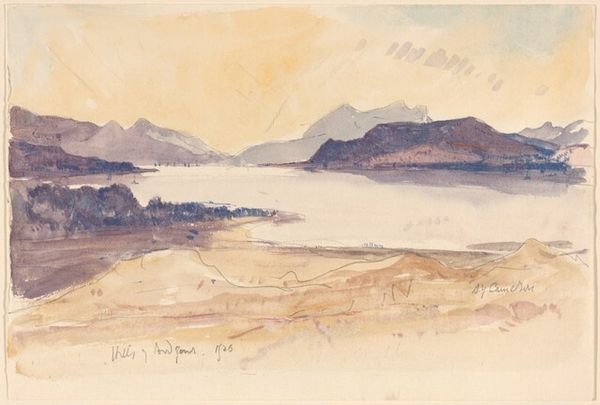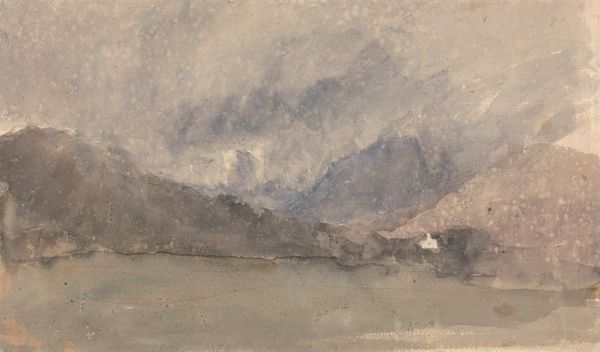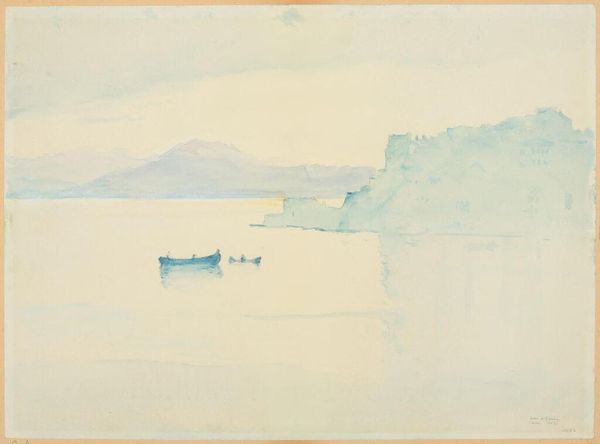
drawing, print, plein-air, watercolor
#
drawing
# print
#
plein-air
#
landscape
#
watercolor
#
romanticism
#
watercolor
Dimensions: sheet: 3 3/4 x 5 in. (9.5 x 12.7 cm)
Copyright: Public Domain
Curator: Let's discuss Peter De Wint's watercolor, "Study for 'The Ferry'", created sometime between 1829 and 1840. It resides now at The Metropolitan Museum of Art. Editor: Instantly, I'm struck by the labor. Think about it—watercolor outdoors. Notoriously fickle and here De Wint grapples with capturing something so fleeting. There's a quiet drama here. It feels like a quickly rendered moment but full of subtle light variations that the artist painstakingly tries to document, while the workers themselves must have struggled against both the light and the current in order to cross the water. Curator: Indeed! De Wint was dedicated to plein-air painting, capturing the direct experience of nature. You can almost feel him fighting against the light, as you note. It imbues a freshness that, as a Romantic artist, he was desperate to get onto the paper, no trickery allowed. It is an attempt to capture something wild, untamed even by human toil. Look at the colors - somber, fleeting...like emotions, don't you think? The movement, though... it all hinges on that ferry and its journey! Editor: Exactly. It speaks volumes about work and the tools used by those anonymous figures to conquer nature and harness water and land. Also, notice the scale, it isn't grand but deliberately quotidian – what we find on inspection, in our daily commute to places we are probably stuck working until we make our exit, just like them. It's raw, unsentimentalized labor depicted via deceptively simple means, watercolor as a medium itself both commercially produced and fragile, a means of material exchange whose fragility itself becomes a reflection of their fleeting importance and struggles. Curator: Absolutely, and don't you find that small boat teeming with souls makes this picture, well, poignant. As if our fates rely upon a perilous crossing in a moody river valley to someplace unknown. We're stuck between beauty and struggle. And as a painter, there is a sort of work being conducted also as you so aptly put. And in its imperfection, it conveys something beyond simple prettiness. Editor: Ultimately, De Wint shows labor both in process and subject and their connection: each has a fleeting importance and purpose to document its moment for material consideration. A work about fleeting moments and struggles and an intersection between artistic representation, toil, and material culture that really makes you think. Curator: For me, I walk away knowing what I am seeing feels like life happening, nothing less.
Comments
No comments
Be the first to comment and join the conversation on the ultimate creative platform.
